AMD Radeon RX 580 vs Nvidia GeForce RTX 2060 Benchmarks, Specs, Performance Comparison and Differences
|
|
|
|
|
AMD Radeon RX 580 vs Nvidia GeForce RTX 2060
Comparison of the technical characteristics between the graphics cards, with AMD Radeon RX 580 on one side and Nvidia GeForce RTX 2060 on the other side. The first is dedicated to the desktop sector, it has 2304 shading units, a maximum frequency of 1,3 GHz, its lithography is 14 nm. The second is used on the desktop segment, it includes 1920 shading units, a maximum frequency of 1,7 GHz, its lithography is 12 nm. The following table also compares the boost clock, the number of shading units (if indicated), of execution units, the amount of cache memory, the maximum memory capacity, the memory bus width, the release date, the number of PCIe lanes, the values obtained in various benchmarks.
Note: Commissions may be earned from the links above.
This page contains references to products from one or more of our advertisers. We may receive compensation when you click on links to those products. For an explanation of our advertising policy, please visit this page.
Specification comparison:
| Graphics card | AMD Radeon RX 580 | Nvidia GeForce RTX 2060 | ||||||
| Market (main) | Desktop | Desktop | ||||||
| Release date | Q2 2017 | Q1 2019 | ||||||
| Model number | 215-0910038, Polaris 20 XTX | TU106-200A-KA-A1 | ||||||
| GPU name | Polaris 20 | TU106 | ||||||
| Architecture | GCN 4. 0 0 |
Turing | ||||||
| Generation | Polaris RX 500 | GeForce 20 | ||||||
| Lithography | 14 nm | 12 nm | ||||||
| Transistors | 5.700.000.000 | 10.800.000.000 | ||||||
| Bus interface | PCIe 3.0 x16 | PCIe 3.0 x16 | ||||||
| GPU base clock | 1.257 MHz | 1.365 MHz | ||||||
| GPU boost clock | 1.340 MHz | 1.680 MHz | ||||||
| Memory frequency | 2.000 MHz | 1.750 MHz | ||||||
| Effective memory speed | 8 Gbps | 14 Gbps | ||||||
| Memory size | 8 GB | 6 GB | ||||||
| Memory type | GDDR5 | GDDR6 | ||||||
| Memory bus | 256 Bit | 192 Bit | ||||||
| Memory bandwidth | 256,0 GB/s | 336,0 GB/s | ||||||
| TDP | 185 W | 160 W | ||||||
| Suggested PSU | 450W ATX Power Supply | 500W ATX Power Supply | ||||||
| Multicard technology | — | — | ||||||
| Outputs |
1x HDMI |
1x DVI |
||||||
| Max display resolution |
4096 x 2160 (Digital), |
4096 x 2160@60Hz (HDMI), |
||||||
| Video decoding | H. 265, HEVC, H.264 4K 265, HEVC, H.264 4K |
— | ||||||
| Video encoding | H.265, HEVC, H.264 4K | — | ||||||
| Cores (compute units, SM, SMX) | 36 | 30 | ||||||
| Shading units (cuda cores) | 2.304 | 1.920 | ||||||
| TMUs | 144 | 120 | ||||||
| ROPs | 32 | 48 | ||||||
| Cache memory | 2 MB | 3 MB | ||||||
| Pixel fillrate | 42,9 GP/s | 80,6 GP/s | ||||||
| Texture fillrate | 193,0 GT/s | 201,6 GT/s | ||||||
| Performance FP16 (half) | 6,2 TFLOPS | 12,9 TFLOPS | ||||||
| Performance FP32 (float) | 6,2 TFLOPS | 6,5 TFLOPS | ||||||
| Performance FP64 (double) | 385,9 GFLOPS | 201,6 GFLOPS | ||||||
| Amazon | ||||||||
| eBay |
Note: Commissions may be earned from the links above.
Price: For technical reasons, we cannot currently display a price less than 24 hours, or a real-time price. This is why we prefer for the moment not to show a price. You should refer to the respective online stores for the latest price, as well as availability.
We can better compare what are the technical differences between the two graphics cards.
Performance comparison with the benchmarks:
Performance comparison between the two processors, for this we consider the results generated on benchmark software such as Geekbench 4.
| FP32 Performance in GFLOPS | |
|---|---|
| Nvidia GeForce RTX 2060 |
6.451 |
| AMD Radeon RX 580 |
6.175 |
The difference is 4%.
Note: Commissions may be earned from the links above. These scores are only an
average of the performances got with these graphics cards, you may get different results.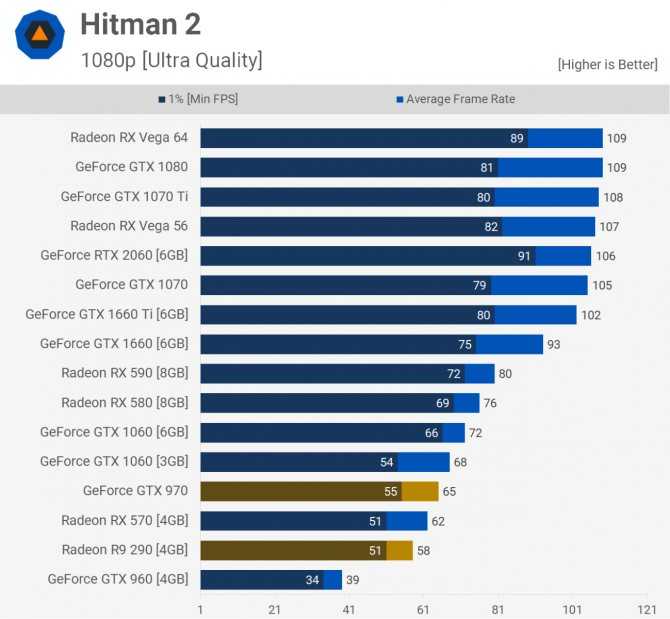
Single precision floating point format, also known as FP32, is a computer number format that typically occupies 32 bits in PC memory. This represents a wide dynamic range of numeric values that employs a floating point.
See also:
AMD Radeon RX 580 2048SPAMD Radeon RX 580 MobileAMD Radeon RX 580 OEMAMD Radeon RX 580GAMD Radeon RX 580XAMD Radeon RX 580X Mobile
Nvidia GeForce RTX 2060 12GBNvidia GeForce RTX 2060 Max-QNvidia GeForce RTX 2060 MobileNvidia GeForce RTX 2060 SuperNvidia GeForce RTX 2060 Super Founders EditionNvidia GeForce RTX 2060 TU104
Equivalence:
AMD Radeon RX 580 Nvidia equivalentNvidia GeForce RTX 2060 AMD equivalent
Disclaimer:
When you click on links to various merchants on this site and make a purchase, this can result in this site earning a commission. Affiliate programs and affiliations include, but are not limited to, the eBay Partner Network.
As an Amazon Associate I earn from qualifying purchases.
This page includes affiliate links for which the administrator of GadgetVersus may earn a commission at no extra cost to you should you make a purchase. These links are indicated using the hashtag #ad.
Information:
We do not assume any responsibility for the data displayed on our website. Please use at your own risk. Some or all of this data may be out of date or incomplete, please refer to the technical page on the respective manufacturer’s website to find the latest up-to-date information regarding the specifics of these products.
NVIDIA GeForce RTX 2060 vs AMD Radeon RX 580 2048SP
Comparative analysis of NVIDIA GeForce RTX 2060 and AMD Radeon RX 580 2048SP videocards for all known characteristics in the following categories: Essentials, Technical info, Video outputs and ports, Compatibility, dimensions and requirements, API support, Memory.
Benchmark videocards performance analysis: PassMark — G3D Mark, PassMark — G2D Mark, Geekbench — OpenCL, CompuBench 1. 5 Desktop — Face Detection (mPixels/s), CompuBench 1.5 Desktop — Ocean Surface Simulation (Frames/s), CompuBench 1.5 Desktop — T-Rex (Frames/s), CompuBench 1.5 Desktop — Video Composition (Frames/s), CompuBench 1.5 Desktop — Bitcoin Mining (mHash/s), GFXBench 4.0 — Car Chase Offscreen (Frames), GFXBench 4.0 — Manhattan (Frames), GFXBench 4.0 — T-Rex (Frames), GFXBench 4.0 — Car Chase Offscreen (Fps), GFXBench 4.0 — Manhattan (Fps), GFXBench 4.0 — T-Rex (Fps), 3DMark Fire Strike — Graphics Score.
5 Desktop — Face Detection (mPixels/s), CompuBench 1.5 Desktop — Ocean Surface Simulation (Frames/s), CompuBench 1.5 Desktop — T-Rex (Frames/s), CompuBench 1.5 Desktop — Video Composition (Frames/s), CompuBench 1.5 Desktop — Bitcoin Mining (mHash/s), GFXBench 4.0 — Car Chase Offscreen (Frames), GFXBench 4.0 — Manhattan (Frames), GFXBench 4.0 — T-Rex (Frames), GFXBench 4.0 — Car Chase Offscreen (Fps), GFXBench 4.0 — Manhattan (Fps), GFXBench 4.0 — T-Rex (Fps), 3DMark Fire Strike — Graphics Score.
NVIDIA GeForce RTX 2060
Buy on Amazon
vs
AMD Radeon RX 580 2048SP
Buy on Amazon
Differences
Reasons to consider the NVIDIA GeForce RTX 2060
- Videocard is newer: launch date 2 month(s) later
- Around 17% higher core clock speed: 1365 MHz vs 1168 MHz
- Around 31% higher boost clock speed: 1680 MHz vs 1284 MHz
- A newer manufacturing process allows for a more powerful, yet cooler running videocard: 12 nm vs 14 nm
- 2x more memory clock speed: 14000 MHz vs 7000 MHz
- Around 77% better performance in PassMark — G3D Mark: 14065 vs 7928
- Around 14% better performance in PassMark — G2D Mark: 754 vs 660
- Around 79% better performance in Geekbench — OpenCL: 69347 vs 38678
- Around 91% better performance in CompuBench 1.
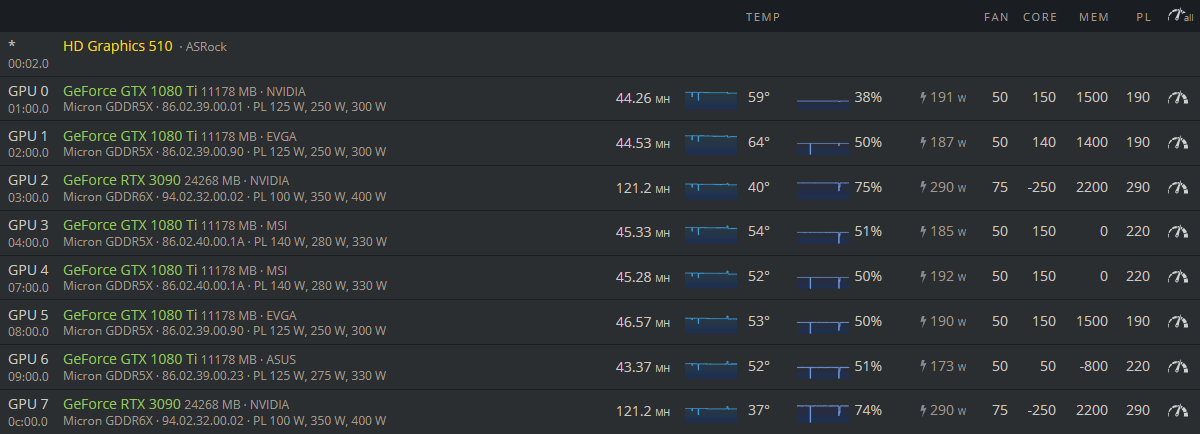 5 Desktop — Face Detection (mPixels/s): 220.337 vs 115.237
5 Desktop — Face Detection (mPixels/s): 220.337 vs 115.237 - Around 66% better performance in CompuBench 1.5 Desktop — Ocean Surface Simulation (Frames/s): 3131.344 vs 1890.261
- 2.2x better performance in CompuBench 1.5 Desktop — T-Rex (Frames/s): 21.852 vs 10.121
- Around 86% better performance in CompuBench 1.5 Desktop — Bitcoin Mining (mHash/s): 1141.283 vs 614.542
- 2.2x better performance in GFXBench 4.0 — Car Chase Offscreen (Frames): 20094 vs 9258
- 2x better performance in GFXBench 4.0 — Manhattan (Frames): 7442 vs 3709
- 2x better performance in GFXBench 4.0 — T-Rex (Frames): 6714 vs 3351
- 2.2x better performance in GFXBench 4.0 — Car Chase Offscreen (Fps): 20094 vs 9258
- 2x better performance in GFXBench 4.0 — Manhattan (Fps): 7442 vs 3709
- 2x better performance in GFXBench 4.0 — T-Rex (Fps): 6714 vs 3351
- Around 97% better performance in 3DMark Fire Strike — Graphics Score: 7499 vs 3809
| Launch date | 7 January 2019 vs 15 October 2018 |
| Core clock speed | 1365 MHz vs 1168 MHz |
| Boost clock speed | 1680 MHz vs 1284 MHz |
| Manufacturing process technology | 12 nm vs 14 nm |
| Memory clock speed | 14000 MHz vs 7000 MHz |
| PassMark — G3D Mark | 14065 vs 7928 |
| PassMark — G2D Mark | 754 vs 660 |
| Geekbench — OpenCL | 69347 vs 38678 |
CompuBench 1. 5 Desktop — Face Detection (mPixels/s) 5 Desktop — Face Detection (mPixels/s) |
220.337 vs 115.237 |
| CompuBench 1.5 Desktop — Ocean Surface Simulation (Frames/s) | 3131.344 vs 1890.261 |
| CompuBench 1.5 Desktop — T-Rex (Frames/s) | 21.852 vs 10.121 |
| CompuBench 1.5 Desktop — Bitcoin Mining (mHash/s) | 1141.283 vs 614.542 |
| GFXBench 4.0 — Car Chase Offscreen (Frames) | 20094 vs 9258 |
| GFXBench 4.0 — Manhattan (Frames) | 7442 vs 3709 |
| GFXBench 4.0 — T-Rex (Frames) | 6714 vs 3351 |
GFXBench 4.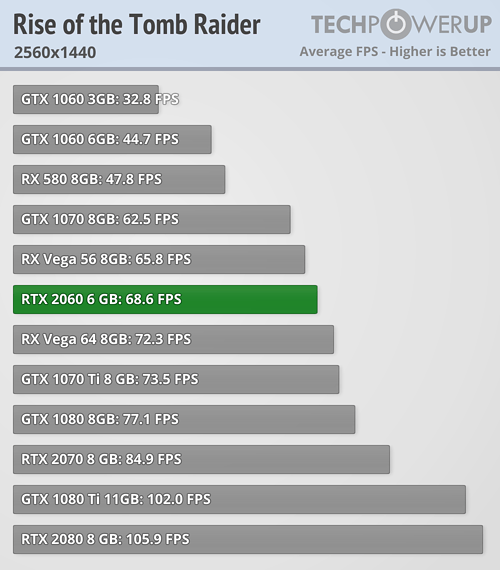 0 — Car Chase Offscreen (Fps) 0 — Car Chase Offscreen (Fps) |
20094 vs 9258 |
| GFXBench 4.0 — Manhattan (Fps) | 7442 vs 3709 |
| GFXBench 4.0 — T-Rex (Fps) | 6714 vs 3351 |
| 3DMark Fire Strike — Graphics Score | 7499 vs 3809 |
Reasons to consider the AMD Radeon RX 580 2048SP
- Around 7% lower typical power consumption: 150 Watt vs 160 Watt
- Around 10% better performance in CompuBench 1.5 Desktop — Video Composition (Frames/s): 149.333 vs 135.923
| Thermal Design Power (TDP) | 150 Watt vs 160 Watt |
| CompuBench 1.5 Desktop — Video Composition (Frames/s) | 149. 333 vs 135.923 333 vs 135.923 |
Compare benchmarks
GPU 1: NVIDIA GeForce RTX 2060
GPU 2: AMD Radeon RX 580 2048SP
| PassMark — G3D Mark |
|
|
||||
| PassMark — G2D Mark |
|
|
||||
| Geekbench — OpenCL |
|
|
||||
CompuBench 1. 5 Desktop — Face Detection (mPixels/s) 5 Desktop — Face Detection (mPixels/s) |
|
|
||||
| CompuBench 1.5 Desktop — Ocean Surface Simulation (Frames/s) |
|
|
||||
| CompuBench 1.5 Desktop — T-Rex (Frames/s) |
|
|
||||
| CompuBench 1.5 Desktop — Video Composition (Frames/s) |
|
|
||||
| CompuBench 1.5 Desktop — Bitcoin Mining (mHash/s) |
|
|
||||
| GFXBench 4.0 — Car Chase Offscreen (Frames) |
|
|
||||
| GFXBench 4.0 — Manhattan (Frames) |
|
|
||||
| GFXBench 4.0 — T-Rex (Frames) |
|
|
||||
GFXBench 4. 0 — Car Chase Offscreen (Fps) 0 — Car Chase Offscreen (Fps) |
|
|
||||
| GFXBench 4.0 — Manhattan (Fps) |
|
|
||||
| GFXBench 4.0 — T-Rex (Fps) |
|
|
||||
| 3DMark Fire Strike — Graphics Score |
|
|
| Name | NVIDIA GeForce RTX 2060 | AMD Radeon RX 580 2048SP |
|---|---|---|
| PassMark — G3D Mark | 14065 | 7928 |
| PassMark — G2D Mark | 754 | 660 |
| Geekbench — OpenCL | 69347 | 38678 |
CompuBench 1. 5 Desktop — Face Detection (mPixels/s) 5 Desktop — Face Detection (mPixels/s) |
220.337 | 115.237 |
| CompuBench 1.5 Desktop — Ocean Surface Simulation (Frames/s) | 3131.344 | 1890.261 |
| CompuBench 1.5 Desktop — T-Rex (Frames/s) | 21.852 | 10.121 |
| CompuBench 1.5 Desktop — Video Composition (Frames/s) | 135.923 | 149.333 |
| CompuBench 1.5 Desktop — Bitcoin Mining (mHash/s) | 1141.283 | 614.542 |
| GFXBench 4.0 — Car Chase Offscreen (Frames) | 20094 | 9258 |
GFXBench 4. 0 — Manhattan (Frames) 0 — Manhattan (Frames) |
7442 | 3709 |
| GFXBench 4.0 — T-Rex (Frames) | 6714 | 3351 |
| GFXBench 4.0 — Car Chase Offscreen (Fps) | 20094 | 9258 |
| GFXBench 4.0 — Manhattan (Fps) | 7442 | 3709 |
| GFXBench 4.0 — T-Rex (Fps) | 6714 | 3351 |
| 3DMark Fire Strike — Graphics Score | 7499 | 3809 |
Compare specifications (specs)
| NVIDIA GeForce RTX 2060 | AMD Radeon RX 580 2048SP | |
|---|---|---|
| Architecture | Turing | GCN 4. 0 0 |
| Code name | TU106 | Polaris 20 |
| Launch date | 7 January 2019 | 15 October 2018 |
| Launch price (MSRP) | $349 | |
| Place in performance rating | 102 | 249 |
| Price now | $349.99 | |
| Type | Desktop | Desktop |
| Value for money (0-100) | 62.74 | |
| Boost clock speed | 1680 MHz | 1284 MHz |
| Core clock speed | 1365 MHz | 1168 MHz |
| Manufacturing process technology | 12 nm | 14 nm |
| Pipelines | 1920 | |
| Thermal Design Power (TDP) | 160 Watt | 150 Watt |
| Transistor count | 10,800 million | 5,700 million |
| Display Connectors | 1x DVI, 1x HDMI, 2x DisplayPort, 1x USB Type-C | 1x DVI, 1x HDMI, 3x DisplayPort |
| DisplayPort count | 2 | |
| DisplayPort support | ||
| HDMI | ||
| Interface | PCIe 3.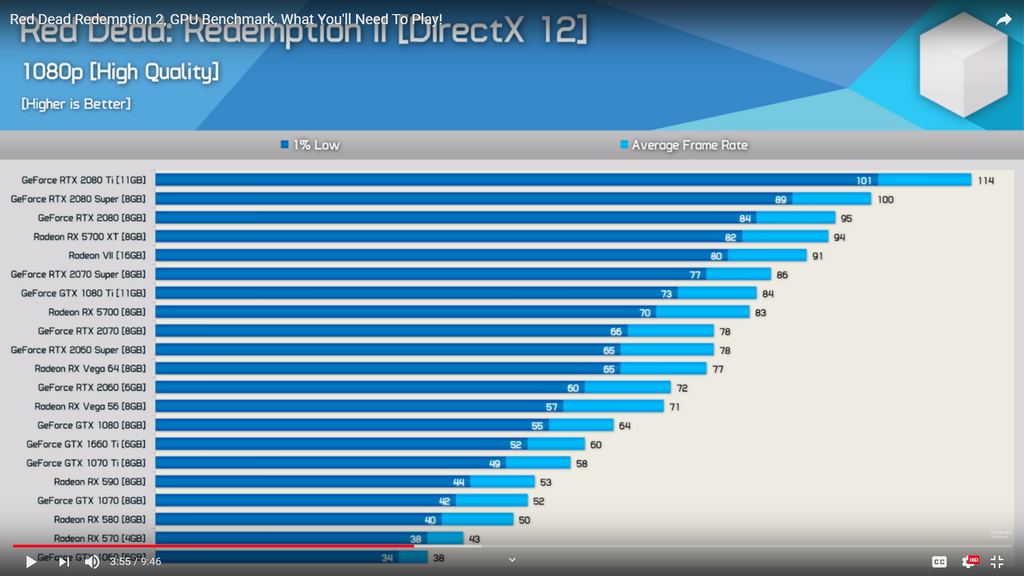 0 x16 0 x16 |
PCIe 3.0 x16 |
| Length | 229 mm | 241 mm |
| Supplementary power connectors | 1x 8-pin | 1x 8-pin |
| DirectX | 12 | 12.0 (12_0) |
| OpenGL | 4.6 | 4.5 |
| Maximum RAM amount | 6 GB | |
| Memory bus width | 192 Bit | |
| Memory clock speed | 14000 MHz | 7000 MHz |
| Memory type | GDDR6 |
MSI Radeon RX 580 Mech 2 Video Card Review and Test
Introduction
Today’s review is dedicated to the flagship of MSI’s latest Mech 2 line, the Radeon RX 580 Mech 2 8 GB.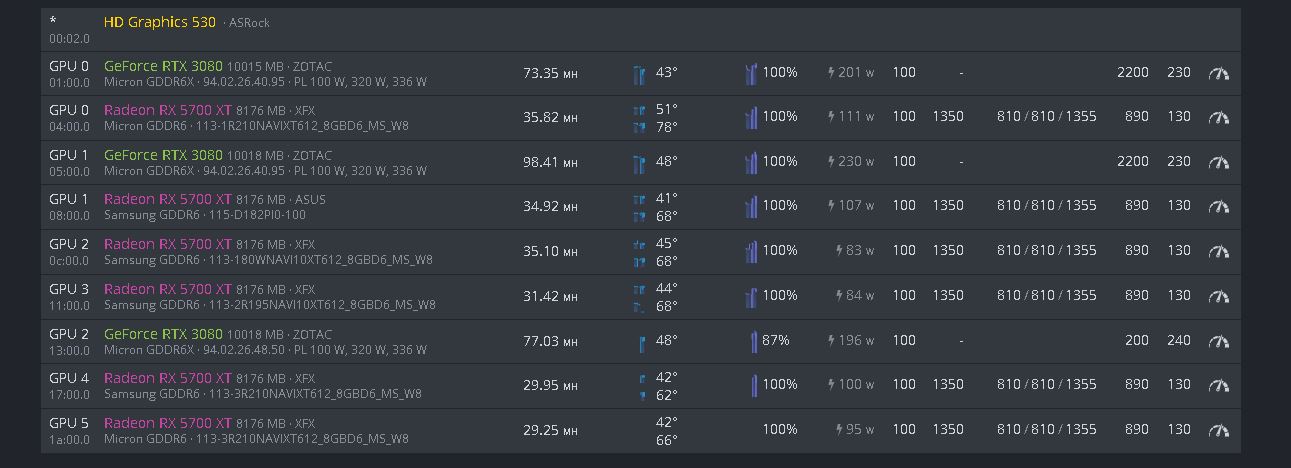 For obvious reasons, MSI does not officially summarize where the Mech 2 series came from, at a time when the company already has Radeon RX 500-series Gaming Series products, such as the RX 580 Gaming X. But reports (true rumors) in the media, of course , everything is laid out on the shelves, MSI created Mech 2 to support the already dead GeForce Partner Program (GPP). Those who follow the news know that ASUS also made similar changes to its product stack with the AREZ Strix, although the AREZ Strix graphics cards are completely identical to the original ASUS ROG Strix Radeon. However, MSI, in its case, nevertheless decided on a deeper differentiation of its products.
For obvious reasons, MSI does not officially summarize where the Mech 2 series came from, at a time when the company already has Radeon RX 500-series Gaming Series products, such as the RX 580 Gaming X. But reports (true rumors) in the media, of course , everything is laid out on the shelves, MSI created Mech 2 to support the already dead GeForce Partner Program (GPP). Those who follow the news know that ASUS also made similar changes to its product stack with the AREZ Strix, although the AREZ Strix graphics cards are completely identical to the original ASUS ROG Strix Radeon. However, MSI, in its case, nevertheless decided on a deeper differentiation of its products.
Readers will by no means be mistaken if they think that the Radeon RX 580 Mech 2 is a card similar to the RX 580 Gaming X, but this is only at first glance, and upon closer inspection, you can notice a lot of differences. Firstly, the famous TwinFrozr VII cooler has been slightly modified, now the heatpipes directly touch the GPU, and the Gaming X had a smooth copper base. Secondly, the metal heat sink of the memory chips and MOS transistors disappeared. Thirdly, vGPU MOSFETs will still please with the presence of a heatsink. The cooler lid also received a much less two-tone design, darker, with red matte inserts. Finally, the backplate design got rid of the L-shaped perforation and a completely black background, which was diluted with red accent graphics.
Secondly, the metal heat sink of the memory chips and MOS transistors disappeared. Thirdly, vGPU MOSFETs will still please with the presence of a heatsink. The cooler lid also received a much less two-tone design, darker, with red matte inserts. Finally, the backplate design got rid of the L-shaped perforation and a completely black background, which was diluted with red accent graphics.
Contents:
And the famous «Dragon» (logo of the gaming line) has also disappeared. But the PCB design of the Mech 2 RX 580 is completely similar to the RX 580 Gaming X: only one 8-pin PCIe power connector, and the display outputs include two HDMI connectors with DisplayPort and one DVI
Radeon RX 580 Mech 2 8 GB frequency configuration and Gaming X is the same; base memory frequencies and GPU overclocking by 40 MHz. As for the price, until the market leaves the area of crypto-dependence, MSI RX 580 Mech 2 8 GB can be bought for probably $ 350 that way.
Specifications
| Price | Shaders | Blocks | Core frequency | Acceleration | Memory frequency | GPU | Transistors | Memory | |
|---|---|---|---|---|---|---|---|---|---|
| RX 470 | 400 $ | 2048 | 32 | 932 MHz | 1216 MHz | 1650 MHz | Ellesmere | 5700M | 4GB GDDR5 256bit |
| RX 570 | 230 $ | 2048 | 32 | 1168 MHz | 1244 | 1750 MHz | Ellesmere | 5700M | 4 GB GDDR5 256 bit |
| GTX 970 | 300 $ | 1664 | 64 | 1051 MHz | 1178 MHz | 1750 MHz | GP204 | 5200M | 4 GB GDDR5 256 bit |
| RX 480 | 500 $ | 2304 | 32 | 1120 MHz | 1266 MHz | 1650 MHz | Ellesmere | 5700M | 8 GB GDDR5 256 bit |
| MSI RX 580 Mech 2 | $290 | 2304 | 32 | 1257 MHz | 1380 MHz | 2000 MHz | Ellesmere | 5700M | 8GB GDDR5X 256bit |
| RX 580 | 250 $ | 2304 | 32 | 1257 MHz | 1340 | 2000 MHz | Ellesmere | 5700M | 8 GB GDDR5 256 bit |
| GTX 1060 3 GB | 230 $ | 1152 | 48 | 1506 MHz | 1708 MHz | 2002 MHz | GP106 | 4400M | 3 GB GDDR5 192 bit |
| GTX 1060 | 280 $ | 1280 | 48 | 1506 MHz | 1708 MHz | 2002 MHz | GP106 | 4400M | 6 GB GDDR5 192 bit |
| GTX 980 Ti | 390 $ | 2816 | 96 | 1000 MHz | 1075 MHz | 1750 MHz | GM200 | 8000M | 6 GB GDDR5 384 bit |
| R9 Fury X | 380 $ | 4096 | 64 | 1050 MHz | N/A | 500 MHz | 8900M | 4 GB HBM 4096 bit | |
| GTX 1070 | 400 $ | 1920 | 64 | 1506 MHz | 1683 MHz | 2002 MHz | GP104 | 7200M | 8 GB GDDR5 256 bit |
| RX Vega 56 | 480 $ | 3584 | 64 | 1156 MHz | 1471 MHz | 800 MHz | Vega 10 | 12500M | 8 GB HBM2 2048 bit |
| GTX 1070 Ti | 430 $ | 2432 | 64 | 1607 MHz | 1683 MHz | 2002 MHz | GP104 | 7200M | 8 GB GDDR5 256 bit |
Previous reviews of Radeon RX 580 based graphics cards:
- Aorus RADEON RX 580 XTR
- Sapphire Radeon RX 580 Nitro+ Limited Edition
Packaging and contents
Kit:
- Video card
- CD with software + documentation
Card
MSI’s latest product shows the company’s typical black and red color scheme. The casing is somewhat harsh, but without any tricks; looks decent. The MSI Radeon RX 580 Mech 2 also features a metal rear panel. Device dimensions are 28.0 cm x 13.5 cm.
The casing is somewhat harsh, but without any tricks; looks decent. The MSI Radeon RX 580 Mech 2 also features a metal rear panel. Device dimensions are 28.0 cm x 13.5 cm.
The card will occupy exactly two slots in the system.
Ports:
- x1 DVI-D
- x2 HDMI
- x2 DisplayPort
The HDMI port is version 2.0b and the DisplayPort has been upgraded to 1.3 HBR3/1.4 HDR ready to support 4K at 120Hz and 5K at 60Hz, or 8K at 60Hz with two cables. GPU acceleration now supports H.264 up to 4K30 and HEVC up to 4K60. Accelerated decoding is supported for HEVC up to 4K60 Main-10, VP9 up to 4K, and H.264 up to 4K120.
No noticeable sagging was found after installation and measurement with a laser line.
Both sides of the PCB.
Closer
In this model, MSI adopted three heatpipes, two of which are double-length, and now the heatsink is pierced 5 times in different places for better cooling performance.
To protect against possible damage during transportation and installation, the card received a back plate made of metal.
The power control components also need to be kept cool, so they got a small heatsink on top of the VRM.
As with the ASRock Radeon RX 580 Phantom Gaming X, one 8-pin connector is required for additional power, and the input power configuration is 225W.
Polaris lacks AMD CrossFire implementation.
PCB Analysis
In order to save money and be efficient, MSI decided to use its custom PCB and offer a power supply design with six phases for the GPU and two for the memory.
The uP9505 voltage regulator controls GPU power. This six-phase PWM controller interfaces with UBIQ M3816N N-Channel MOSFETs.
Dual phase memory VRM and powered by the same UBIQ M3816N MOSFETs as the GPU.
GDDR5 memory chips are manufactured by Micron and carry the model part number D9VVR, which stands for MT51J256M32HF-80:B. According to the specification, their frequency is 2000 MHz (effective power is 8000 MHz GDDR5).
According to the specification, their frequency is 2000 MHz (effective power is 8000 MHz GDDR5).
The
Radeon RX 580 uses an Ellesmere GPU that is completely identical to the Radeon RX 480. The only difference is the manufacturing process, which has been improved and is now manufactured by Samsung and Globalfoundries. The number of transistors is 5.7 billion and the die size is 232 mm².
Test configuration
| Test configuration — VGA Rev. 2018.1 | ||
| Processor | Intel Core i7-8700K @ 4.8 GHz (Coffee Lake, 12MB Cache) |
|
|---|---|---|
| Motherboard | ASUS Maximus X Hero Intel Z370 |
|
| RAM | G.SKILL 16 GB Trident-Z DDR4 @ 3867 MHz 18-19-19-39 |
|
| Accumulator | 2x Patriot Ignite 960 GB SSD | |
| Power: | Seasonic Prime Ultra Titanium 850W | |
| Cooler | Cryorig R1 Universal 2x 140mm fan | |
| Operating system | Windows 10 64-bit Fall Creators Update | |
| Drivers | All NVIDIA cards: 390. 77 WHQL 77 WHQL |
All AMD cards: Catalyst 18.2.1 WHQL |
| Display | Acer CB240HYKbmjdpr 24″ 3840×2160 | |
Assassin’s Creed Origins
Battlefield 1
Call of Duty: WWII
Civilization VI
Dawn of War III
Deus Ex: Mankind Divided
Dishonored 2
Divinity Original Sin II
F1 2017
Ghost Recon Wildlands
Grand Theft Auto V
Hellblade: Senua’s Sacrifice
Hitman
Middle-earth: Shadow of War
Prey
Rainbow Six: Siege
Rise of the Tomb Raider
Sniper Elite 4
SpellForce 3
The Evil Within 2
The Witcher 3: Wild Hunt
Wolfenstein II
0341 Power consumption
Idle power consumption differs from most of its peers, but with a difference of only 3 watts. Multi-monitor setups have always been a problem for AMD, and the MSI RX 580 Mech 2 is proof of that.
Multi-monitor setups have always been a problem for AMD, and the MSI RX 580 Mech 2 is proof of that.
Gaming power draw is way below the reference RX 580, which tells us that MSI isn’t pushing the power limit too far. Furmark’s maximum output is decent, above the officially specified 225W, though I don’t think that’s a big deal. In addition, this gives the card more opportunities for self-realization, which is positively reflected in the overall performance.
Noise level
As usual, the card will never turn on the fans before it reaches 60°C.
In gaming, the noise level is 32 dBA, a value close to that of the average GTX 1060 variants, but still far from the best performance.
Total throughput
Throughput/W
Throughput/$
Ethereum mining throughput
Overclocking
The maximum memory overclock of our sample is 2250 MHz (+13%), and the GPU is 1540 MHz (+12%), which is a fantastic result for a GPU.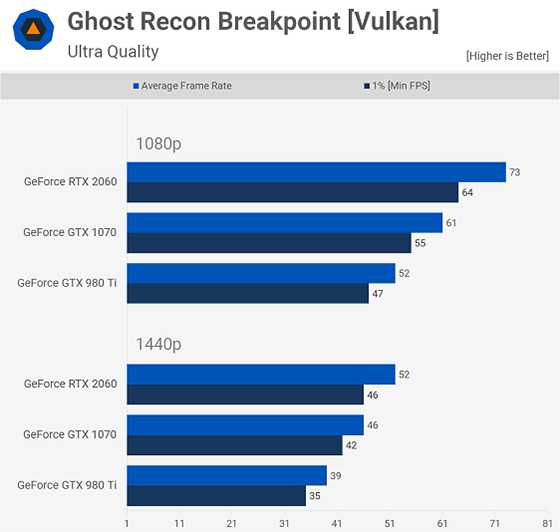 So far, none of the RX 580 offerings has come close.
So far, none of the RX 580 offerings has come close.
| Max. GPU Clock | Max. Memory Clock | |
|---|---|---|
| MSI RX 580 Mech 2 | 1540 MHz | 2250 MHz |
| ASRock RX 580 Gaming X | 1430 MHz | 2230 MHz |
| Gigabyte RX 580 XTR | 1460 MHz | 2250 MHz |
| Sapphire RX 580 Nitro+ | 1480 MHz | 2250 MHz |
| MSI RX 480 Gaming X | 1370 MHz | 2250 MHz |
| ASUS RX 480 STRIX | 1355 MHz | 2250 MHz |
| AMD RX 480 Reference | 1335 MHz | 2250 MHz |
Overclocking efficiency
Using the obtained clock speeds, a quick Unigine Heaven test was run to evaluate the gain.
Actual, actual gain in 3D performance from overclocking was 10. 6%!
6%!
Temperatures
Temperatures, both in idle and in gaming, are very adequate.
| GPU temperatures (comparison) | |||
| Idle | Load | Gaming Noise | |
|---|---|---|---|
| MSI RX 580 Mech 2 | 51°C | 74 °C | 32 dBA |
| ASRock RX 580 Gaming X | 37 °C | 77 °C | 45 dBA |
| Gigabyte RX 580 XTR | 47 °C | 74 °C | 34 dBA |
| Sapphire RX 580 Nitro+ | 46°C | 75 °C | 32 dBA |
| MSI RX 480 Gaming X | 48 °C | 73 °C | 31 dBA |
| ASUS RX 480 STRIX | 38 °C | 68 °C | 39 dBA |
| AMD RX 480 Reference | 38 °C | 84 °C | 41 dBA |
Frequency Profile
| GPU frequency | Memory frequency | Clock GPU Voltage (measured) |
|
|---|---|---|---|
| Desktop | 300 MHz | 300 MHz | 0. 750 V 750 V |
| Multi-Monitor | 600 MHz | 2000 MHz | 0.950 V |
| Blu-ray Playback | 318 MHz | 300 MHz | 0.800 V |
| 3D Load | 1380 MHz | 2000 MHz | 1.135 V |
Rating and review
MSI Radeon RX 580 Mech 2 retail price not known yet; the expected range is from about $350 to $370, which is basically too much.
- Faster GeForce GTX 1060
- Overclocking out of the box
- Quiet in gaming
- Idle fan lock
- Backplate
- HDMI 2.0b, DisplayPort 1.4
- Overpriced
- VRAM without overclocking
- Memory overdrive low limit without overclocking
- Without RGB lighting
9.2
I think that the target audience was a bit taken aback when MSI announced a new Radeon RX 580 card, a product that has been on the market for two years now, if you take into account the RX 480, of which the RX 580 is a rebrand. Apart from the collapse of the affiliate program From NVIDIA, of course, one should take into account a decent reduction in demand from miners and, as a result, the formation of deposits of unsold cards, which could be embodied in a new gaming product.
Apart from the collapse of the affiliate program From NVIDIA, of course, one should take into account a decent reduction in demand from miners and, as a result, the formation of deposits of unsold cards, which could be embodied in a new gaming product.
Out of the box, the Radeon RX 580 Mech 2 has a slight factory overclock of 40MHz, pushing the GPU to 1380MHz, resulting in a 2% boost in 1080p performance, similar to what the NVIDIA GTX 1060 6GB offers. AMD’s next fastest card appears to be the RX Vega 56, which is 34% faster but more expensive. Further, the NVIDIA GTX 1060 3GB is 13% slower, while the GTX 1070 is already 29% faster. This performance makes the RX 580 the best choice for 1080p gaming at high levels of detail. It would be great to overclock the memory to the heap, as the chips are certainly capable of such a step on the part of MSI, which confirms our review.
MSI products have always been famous for their decent coolers, and the Mech 2 is no exception. Thanks to its direct contact heatpipe design, which allows it to occupy two slots, it provides decent noise and temperature levels. At just 32 dBA, the card is on par with the quietest RX 580 variants we’ve tested so far, with noise levels comparable to custom GTX 1060 cards. However, the highly optimized custom GTX 1060 models are quite a bit quieter. The function of blocking fans during downtime also found a place.
At just 32 dBA, the card is on par with the quietest RX 580 variants we’ve tested so far, with noise levels comparable to custom GTX 1060 cards. However, the highly optimized custom GTX 1060 models are quite a bit quieter. The function of blocking fans during downtime also found a place.
The overclocking potential of our sample was phenomenal, which could just be luck in the lottery or a feature for very recently manufactured chips. The tested sample of the chip was marked as released on the 17th week of 2018, which is significantly newer than any other RX 580 GPU also tested earlier. Over time, as more results come out regarding the Radeon RX 580 Mech 2, it will be possible to say with more certainty whether this is a trend or just a lucky copy.
The power consumption of the MSI Radeon RX 580 Mech 2 is 15W less than even the reference design card, and naturally much lower than competing custom designs. And this is one of the cornerstones around which MSI has achieved such low temperatures and noise levels without the need for a bulky (and expensive) three-slot cooler.

 852
852 542
542